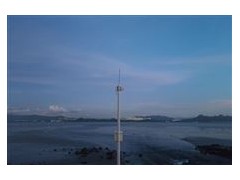In the digital age, printing technology is radiating unprecedented vitality. From drop-on-demand inkjet to growable packaging to new integrations of sustainable substrates and artificial intelligence, these four industry-leading trends are unveiling the future of printing. The rapid advancement and innovation of technology have not only left a profound impact on daily life, but also reshaped the global business and production landscape.
As the 2024 drupa exhibition approaches, this article will take you to deeply explore the four cutting-edge trends in the current printing industry and reveal how they inject new vitality into innovation and development in various industries. At drupa, we create the future!
Trend 1: Drop-on-demand inkjet
Under the development framework of Industry 4.0, digital printing, especially inkjet technology, will become the focus of Drupa 2024. In this exhibition, 413 exhibitors will focus on prepress and printing technology. Today, with increasing awareness of environmental protection, drop-on-demand inkjet technology will open up more possibilities and become an important technology for future printing.
Drop-on-demand inkjet technology is a printing technology that utilizes the principle of inkjet. Similar to "drop on demand", drop-on-demand inkjet means that ink is only supplied through the print head when the print point is actually set. The two main principles of inkjet printing are thermal inkjet and piezoelectric inkjet. Regardless of the principle, the concept behind it is "set on demand". In thermal inkjet, the liquid within the ink explodes to form bubbles that force the ink through the nozzle. Piezoelectric inkjet printers, on the other hand, use piezoelectric elements to push ink through the nozzle. In front of the nozzle is a chamber filled with ink, and by reducing the volume of this chamber, the ink is ejected through the nozzle. Ink types include pigment inks and dye inks. Pigment ink is suspended in a liquid that gives the ink its color and long-lasting, water-resistant properties. Dye inks offer a wider range of colors and are composed of dye molecules dissolved in the ink fluid.
Equipped with drop-on-demand inkjet technology for industrial purposes such as printing on cardboard, plastic or packaging, it offers many advantages such as flexibility and functionality. For example, using DOD (Drop-on-Demand) print heads can achieve resolutions of 1200 dpi and higher, creating gradient and grayscale effects. If UV LED-based fast-curing inks are used, drop-on-demand inkjet printers can achieve high throughput at very low cost.
According to a report by Ink World Magazine and Grand View Research, the industrial end-user segment is expected to grow to 6.9%, with the high operating speed of industrial inkjet printers playing a major role, which means products can be encoded and marked quickly. Additionally, because the nozzle can be placed far away from the product, manufacturers can design products in different shapes and sizes. For the packaging industry, large-format inkjet printers with drop-on-demand technology offer many opportunities for printing high-quality labels and packaging that are not only cost-effective but also offer flexibility and short turnaround times.
Do you want to learn more about cutting-edge innovative topics in the printing industry and exhibit your company's latest technology products? At drupa 2024, drupa new era (drupa dna) provides an excellent platform for startups and entrepreneurs who want to promote their businesses to showcase themselves. drupa is set up for all companies that want to participate Pavilion modules and booth concepts to showcase their products and ideas. Whether you are an exhibitor, sponsor or speaker, your place is reserved at Drupa New Era.
Trend 2: Plantable packaging
Alternative packaging materials are becoming increasingly diverse on the market, with new materials popping up ranging from palm leaves, edible six-pack rings, shrimp shell plastic bags to wood pulp cellophane. These materials bring a new element to the packaging industry, where compostable packaging has been popular for quite some time. With the development of the times, plantable packaging has become the next big trend.
The basic concept of growable packaging is very simple: not only does it decompose like traditional compostable packaging, but it also contains seeds that bury the packaging in the soil and decompose when flowers or herbs bloom, making it an ideal embodiment of zero waste. Pangea Organics from the US is one of the first companies to launch growable packaging. They have partnered with seed producers and technology companies to launch a range of body and skin care products packaged in 100% compostable molded fiber boxes. Made without glue or molds and fully biodegradable post-consumer.
Many companies are starting to match growable packaging to their products, such as a zero-waste packaging system for fruit and vegetables designed by students from Arts University Bournemouth, and a new one designed by Connor Davey Chocolate packaging, which when grown will grow into the main ingredient of the product it contains, demonstrates the slogan "delicious gifts that keep giving".
At the same time, some designers are also innovating in the packaging of traditional products. For example, Greek designer George Bosnas added biological seeds to the packaging of traditional egg cartons so that they can be planted after consumption and become environmentally friendly. part of.
Egg cartons that can be used for planting.
Market research organization Mintel recently released the "Global Sustainability Outlook 2023" report, which provides an in-depth exploration of the changes in consumer values and attitudes towards sustainable development. "In our survey, consumers rated familiarity with the brand and perception of product quality as most important. The third most important packaging theme was product protection, with recyclable and sustainably sourced packaging coming in third. Four". Richard Cope, author of the report, noted. These innovative packaging are not only to meet market needs, but also to solve environmental problems. Today, when the topic of packaging that saves the environment is attracting increasing attention, plantable packaging, as a solution, demonstrates the packaging industry's concern for environmental sustainability.
Do you have a special interest in the topic of sustainable packaging? At drupa 2024, there will be 529 exhibitors focusing on packaging printing, post-press processing, processing equipment and packaging and printing machinery. The Touchpoint Packaging Forum (tpp) will delve into topics of consumer interest on the topic of packaging. This series of special forums will showcase innovative and eye-catching packaging design concepts, focus on the latest developments in packaging design and production, and provide an open platform for all packaging industry experts involved in developing future-oriented packaging solutions. We will see how the packaging industry continues to innovate in this area to provide more solutions for the planet.






